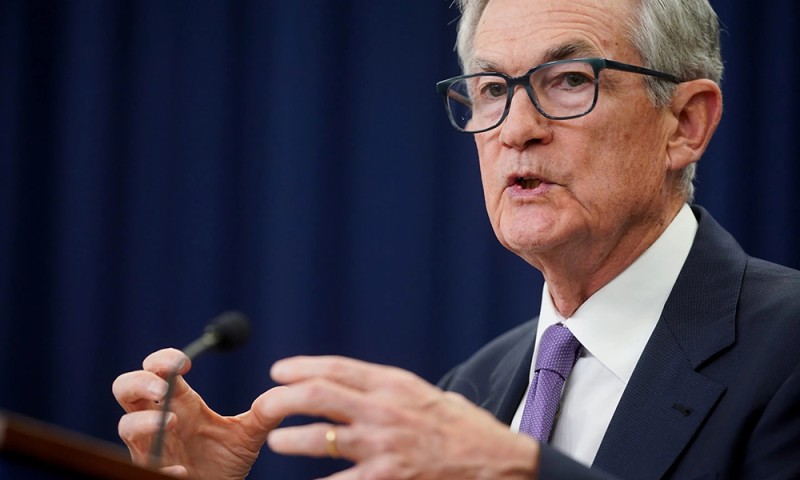
美国国债规模如今已高达38万亿美元,超过年度经济产出的120%。专家警告称,亟需采取措施应对这一紧迫局面。无党派机构彼得·G·彼得森基金会(Peter G. Peterson Foundation)上周四发布了一系列专题文章,汇聚了基金会外部的多位顶尖经济学家与历史学家的独立研究。专家们分析了巨额国债对美国经济实力、美元主导地位以及全球领导力构成的风险,还探讨了国债对利率、通胀和金融市场的影响,部分专家甚至将当前历史时刻直接定义为“危机”。他们一致认为,美国正进行一场危险的财政豪赌。
在评估不断累积的负债时,美国外交关系委员会(Council on Foreign Relations)名誉主席理查德·哈斯(Richard Haass)与纽约大学(NYU)教授卡罗琳·基萨恩(Carolyn Kissane)直言不讳地评判道:“简单来说,我们犯了错,在‘晴天'就花光了‘雨天'的积蓄。”这意味着,当未来需要开展重大军事行动或遭遇危机需要刺激经济时,政府可用的“备用资金”已经所剩无几。
债务危机已触及关键临界点。目前,美国每年用于偿付债务利息的支出约为1万亿美元,这一数字已超过该国的国防开支。经济学家希瑟·朗(Heather Long)指出,21世纪20年代正“迅速演变为巨额赤字常态化的时代”。即便失业率处于低位,预计年度财政赤字仍将维持高位(约占GDP的6%),这与美国的历史常态形成了惊人背离。
经济学家警告称,过去行之有效的解决方案——例如二战后的债务削减或20世纪90年代的财政盈余——如今已不再适用。经济学家巴里·艾肯格林(Barry Eichengreen)解释说,二战后国债急剧下降,得益于极为有利的“利率与增长率差”条件(即低实际利率和高速GDP增长)。同样,20世纪90年代的赤字削减则得益于“和平红利”,使得国防开支得以大幅削减。“如今,这些有利条件均已不复存在。”
国债对国家安全与美元地位的威胁
艾肯格林本人指出,地缘政治风险正迫使美国增加而非削减国防开支。使问题更趋复杂的是政治两极分化,这被指是阻碍成功实现财政整顿的最关键因素。在主要福利项目受政治庇护的情况下,财政僵局难以打破;鉴于美国的税收收入相较于其他发达经济体处于偏低水平,增加额外收入便成了最可行的路径。
国债不仅被视为财政压力,更被界定为对国家安全的直接威胁。哈斯和基萨恩强调,用于支付债务利息的资金“无法再用于更具生产性的目的,无论是可自由支配的国内开支还是国防”,这是一种典型的挤出效应。其他资金不足的领域——包括网络安全和公共卫生——则正在侵蚀保护国土安全的内部能力。
哈斯和基萨恩将这场危机描述为“慢动作”发展的危机,而这恰恰是民主政府最难有效应对的类型。他们补充道,专家认为,避免出现债券市场崩盘的突然“悬崖情景”并不等于避免了危机本身:“终有一天,温水煮青蛙会达到致命的临界点。”
支撑美元地位的制度完整性也面临风险。历史学家哈罗德·詹姆斯(Harold James)写道,他认为当前局势正处于“一场针对美元和国际货币体系的极其危险的实验之中,其根本驱动力是一场财政豪赌”。法治、问责制和透明度的削弱,引发了“美国主权债券市场政治风险”的幽灵,使得美元的主导地位更难维持。令人不安的是,对美联储等机构进行政治干预或篡改国家统计数据(如阿根廷的警示故事所示)的可能性,进一步侵蚀了市场信心。
詹姆斯的同事、普林斯顿大学政治学教授莱娜·莫斯利(Layna Mosley)引用了法国政治家瓦莱里·吉斯卡尔·德斯坦(Valéry Giscard d'Estaing)的著名评论,即美国凭借美元地位享有“过度特权”。她指出,凭借美元在全球的角色以及美国在全球金融体系中的领导地位,美国政府得以一直以优惠条件大规模举债。但如今,政府的行动和政策正在制造不确定性和不稳定性,并且“削弱了那个美国曾从中受益匪浅的、基于规则的自由国际秩序”。
信誉的丧失增强了债券市场的影响力,而债市的不满情绪可能通过抵押贷款和其他贷款利率飙升,给普通美国民众带来突然而痛苦的经济后果。哈斯和基萨恩用了另一个比喻,称这种情况好比“仅仅因为家里着火或路上发生车祸的概率低,就放弃购买火险或车险”。(*)
译者:刘进龙
审校:汪皓
美国国债规模如今已高达38万亿美元,超过年度经济产出的120%。专家警告称,亟需采取措施应对这一紧迫局面。无党派机构彼得·G·彼得森基金会(Peter G. Peterson Foundation)上周四发布了一系列专题文章,汇聚了基金会外部的多位顶尖经济学家与历史学家的独立研究。专家们分析了巨额国债对美国经济实力、美元主导地位以及全球领导力构成的风险,还探讨了国债对利率、通胀和金融市场的影响,部分专家甚至将当前历史时刻直接定义为“危机”。他们一致认为,美国正进行一场危险的财政豪赌。
在评估不断累积的负债时,美国外交关系委员会(Council on Foreign Relations)名誉主席理查德·哈斯(Richard Haass)与纽约大学(NYU)教授卡罗琳·基萨恩(Carolyn Kissane)直言不讳地评判道:“简单来说,我们犯了错,在‘晴天'就花光了‘雨天'的积蓄。”这意味着,当未来需要开展重大军事行动或遭遇危机需要刺激经济时,政府可用的“备用资金”已经所剩无几。
债务危机已触及关键临界点。目前,美国每年用于偿付债务利息的支出约为1万亿美元,这一数字已超过该国的国防开支。经济学家希瑟·朗(Heather Long)指出,21世纪20年代正“迅速演变为巨额赤字常态化的时代”。即便失业率处于低位,预计年度财政赤字仍将维持高位(约占GDP的6%),这与美国的历史常态形成了惊人背离。
经济学家警告称,过去行之有效的解决方案——例如二战后的债务削减或20世纪90年代的财政盈余——如今已不再适用。经济学家巴里·艾肯格林(Barry Eichengreen)解释说,二战后国债急剧下降,得益于极为有利的“利率与增长率差”条件(即低实际利率和高速GDP增长)。同样,20世纪90年代的赤字削减则得益于“和平红利”,使得国防开支得以大幅削减。“如今,这些有利条件均已不复存在。”
国债对国家安全与美元地位的威胁
艾肯格林本人指出,地缘政治风险正迫使美国增加而非削减国防开支。使问题更趋复杂的是政治两极分化,这被指是阻碍成功实现财政整顿的最关键因素。在主要福利项目受政治庇护的情况下,财政僵局难以打破;鉴于美国的税收收入相较于其他发达经济体处于偏低水平,增加额外收入便成了最可行的路径。
国债不仅被视为财政压力,更被界定为对国家安全的直接威胁。哈斯和基萨恩强调,用于支付债务利息的资金“无法再用于更具生产性的目的,无论是可自由支配的国内开支还是国防”,这是一种典型的挤出效应。其他资金不足的领域——包括网络安全和公共卫生——则正在侵蚀保护国土安全的内部能力。
哈斯和基萨恩将这场危机描述为“慢动作”发展的危机,而这恰恰是民主政府最难有效应对的类型。他们补充道,专家认为,避免出现债券市场崩盘的突然“悬崖情景”并不等于避免了危机本身:“终有一天,温水煮青蛙会达到致命的临界点。”
支撑美元地位的制度完整性也面临风险。历史学家哈罗德·詹姆斯(Harold James)写道,他认为当前局势正处于“一场针对美元和国际货币体系的极其危险的实验之中,其根本驱动力是一场财政豪赌”。法治、问责制和透明度的削弱,引发了“美国主权债券市场政治风险”的幽灵,使得美元的主导地位更难维持。令人不安的是,对美联储等机构进行政治干预或篡改国家统计数据(如阿根廷的警示故事所示)的可能性,进一步侵蚀了市场信心。
詹姆斯的同事、普林斯顿大学政治学教授莱娜·莫斯利(Layna Mosley)引用了法国政治家瓦莱里·吉斯卡尔·德斯坦(Valéry Giscard d'Estaing)的著名评论,即美国凭借美元地位享有“过度特权”。她指出,凭借美元在全球的角色以及美国在全球金融体系中的领导地位,美国政府得以一直以优惠条件大规模举债。但如今,政府的行动和政策正在制造不确定性和不稳定性,并且“削弱了那个美国曾从中受益匪浅的、基于规则的自由国际秩序”。
信誉的丧失增强了债券市场的影响力,而债市的不满情绪可能通过抵押贷款和其他贷款利率飙升,给普通美国民众带来突然而痛苦的经济后果。哈斯和基萨恩用了另一个比喻,称这种情况好比“仅仅因为家里着火或路上发生车祸的概率低,就放弃购买火险或车险”。(*)
译者:刘进龙
审校:汪皓
The United States' national debt, currently standing at $38 trillion and exceeding 120% of annual economic output, demands action, experts warn. The nonpartisan Peter G. Peterson Foundation gathered a series of distinguished national economists and historians from outside the foundation in a collection of essays published Thursday. They analyzed risks to U.S. economic strength, dollar dominance, and global leadership. The experts also explored the national debt's impact on interest, inflation and financial markets, with some characterizing this moment in history as a crisis. Collectively, they argue that the nation is operating under a dangerous fiscal gamble.
Assessing the mounting liabilities, Council on Foreign Relations President Emeritus Richard Haass and NYU professor Carolyn Kissane delivered a stark judgment: “In simpler terms, we are guilty of spending our rainy-day fund in sunny weather.” Meaning, the government has little “dry powder” left to fund a major military effort or stimulate the economy during a crisis.
The debt crisis has reached a critical threshold. The U.S. now spends approximately $1 trillion annually on servicing its debt—a figure that surpasses the country's spending on defense. Economist Heather Long wrote that the 2020s are “fast becoming the era of big permanent deficits” with annual budget gaps projected to remain high (around 6% of GDP) even though unemployment is low, a startling departure from U.S. historical norms.
Economists warn that solutions that worked in the past—such as the post-World War II debt reduction or the 1990s surpluses—are unavailable today. Economist Barry Eichengreen explained that the debt's steep decline after World War II was supported by a highly favorable interest-rate-growth-rate differential (low real interest rates and fast GDP growth). Likewise, the 1990s reduction was fueled by the “peace dividend,” enabling deep cuts in defense spending. “None of these facilitating conditions is present today.”
The Threat to National Security and the Dollar
Eichengreen, for his part, noted that current security threats from Russia, Iran, and the South China Sea create pressure for defense spending increases, not cuts. Compounding the problem is political polarization, which is cited as the most robust determinant working against successful fiscal consolidation. With major entitlement programs politically protected, this fiscal gridlock leaves raising additional revenue as the most viable path, given that the United States is a low tax-revenue economy compared to its peers.
The debt is framed not just as a financial strain but as a direct threat to security. Haass and Kissane emphasized that money spent on borrowing is “money not available for more productive purposes, from discretionary domestic spending to defense,” a classic crowding-out phenomenon. Other underfunded programs—including cybersecurity and public health—hollow out internal capacities that protect the homeland.
The crisis was characterized by Haass and Kissane as one that is moving in “slow motion,” which is the most difficult type for democratic governments to address effectively. Avoiding a sudden “cliff scenario” where bond markets crash, experts argue, is not avoiding the crisis itself, they added: “The day will come when the boiling water finally kills the frog.”
The institutional integrity undergirding the U.S. dollar is also at risk. Historian Harold James wrote that he sees the situation as “the middle of a very dangerous experiment with the U.S. dollar, and with the international monetary system, whose fundamental driver is a fiscal gamble.” Erosion of rule of law, accountability, and transparency raises the “specter of political risk in U.S. sovereign bond markets,” making dollar dominance harder to maintain. Disturbingly, the potential for political interference in institutions, such as the Federal Reserve or the tampering with national statistics—as seen in Argentina's cautionary tale—further erodes confidence.
James' colleague, Princeton politics professor Layna Mosley, cited the famous comment from the French statesman Valéry Giscard d'Estaing, who described the “exorbitant privilege” the U.S. enjoyed on the back of the dollar. She noted that by virtue of the global role of the U.S. dollar and the U.S. leadership of the global financial system, its government has been able to borrow significant amounts, on generous terms. But now, government actions and policy generate uncertainty and instability and “undermine the rules-based liberal international order from which the U.S. benefitted greatly.”
This loss of credibility empowers bond markets, and their displeasure can lead to sudden, painful economic consequences for everyday Americans through surging interest rates on mortgages and loans. Haass and Kissane turned to another metaphor, saying the situation is akin to “forgoing fire or automobile insurance just because the odds are you will not suffer from a fire at home or an accident on the road.”

